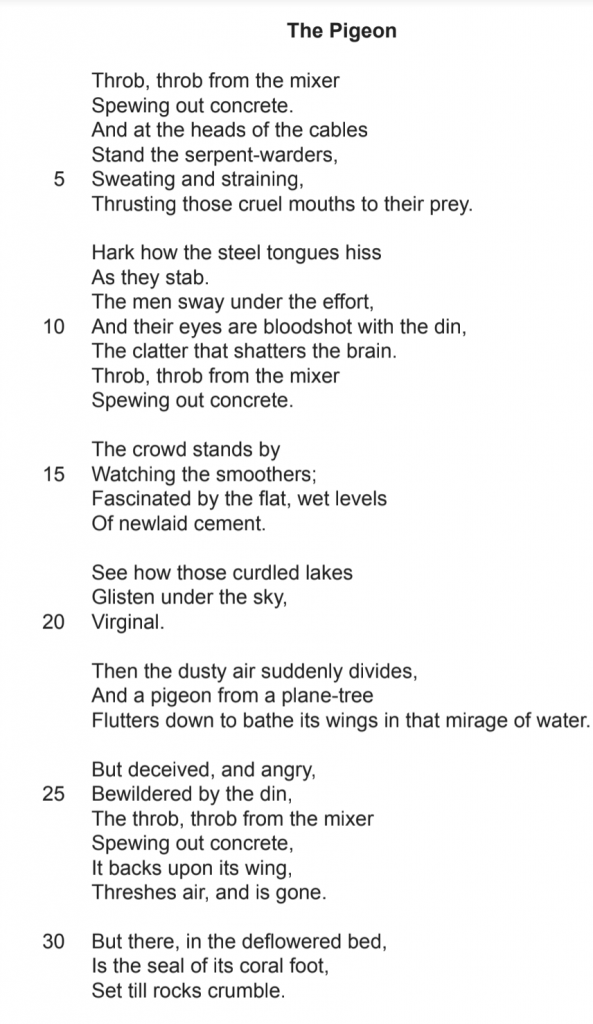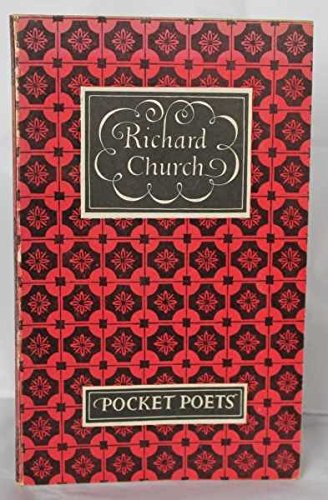In the poem The Pigeon, by Richard Church, the persona highlights the effects of construction and industrialization on the environment. The mixer is compared to a “serpent” guarded by the construction workers who are referred to as the “serpent warders”. The earth is compared to the “prey” where the construction workers thrust their cruel mouths into. The persona highlights the relentless continuation of the construction process and the ruthless effects it has on the environment. The construction is depicted as sinister by comparing it to a snake and through the use of words such as “hark” and “stab”to highlight the relationship between construction and the environment. In the fifth stanza, the line “then the dusty air suddenly divides” is used to show the air pollution caused by construction. The persona heavily relies on zoomorphism to represent nature as a hapless victim to the relentless industrialization process. The mixer is depicted as the snake that hisses, the construction workers are the guardians of the snake and the earth is their prey.
The poem builds an emphasis on the toil that the construction process has on industrial workers. The workers are “sweating and straining” yet the mixer, which represents the industrialization process is indifferent to their fatigue. “Throb, throb from the mixer” regardless of the tired workers. The persona also highlights the not only the physical but also the mental effects of the process on construction workers. The line in the second stanza “the clatter that shatters the brain is used to highlight the psychological turmoil experienced by the workers. The workers also experience health problems. Which is shown in the line “and their eyes bloodshot with din” which suggests that the construction affects their sight.
The persona also highlights the innocence of nature which is intruded by the vile construction. The pigeon is used as a symbol of innocence and represents a naïve victim who misinterprets concrete for a mirage of water. The pigeon feels deceived and angry as it flaps away from the concrete which it thought was water. The unawareness of the pigeon is comparable to the observers who are also unaware of the effects that construction has on the environment. The crowd is fascinated by “the flat, wet levels” of “new laid cement”. The pigeon also symbolizes the beauty of nature which is defined by the vile mixer. The persona describes the beauty and innocence of nature as “see how those curdled lakes…glitter under the sky…, virginal”. The term virginal denotes the purity of nature then the persona, in the last paragraph describes how construction breaks the purity by comparing it to the deflowered bed.
The poem, The Pigeon by Richard Church cleverly employs zoomorphism and onomatopoeia to highlight the destructive nature of industrialization on the environment. The persona compares the sounds made by the mixer to the sounds made by a serpent while nature is portrayed as innocent and intruded into by the construction process. The purity of nature is compared to a pigeon or a virgin. This comparison perfectly present the effects of industrialization on the environment.








